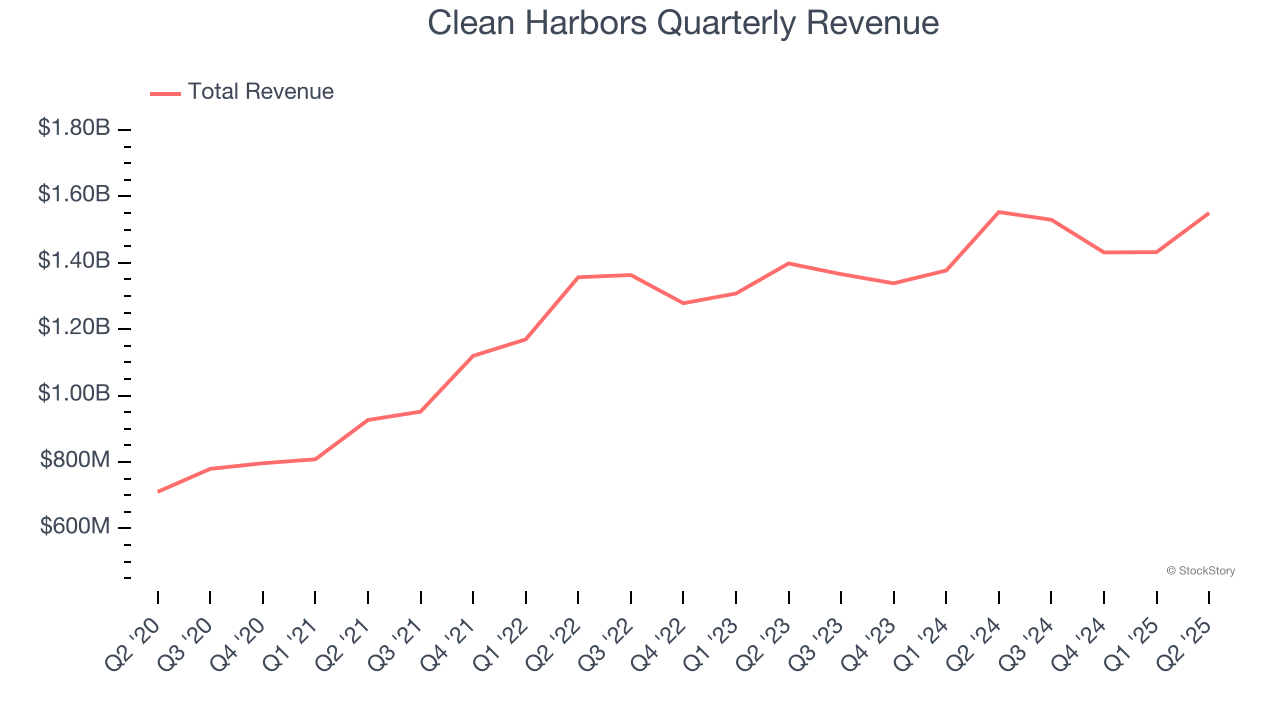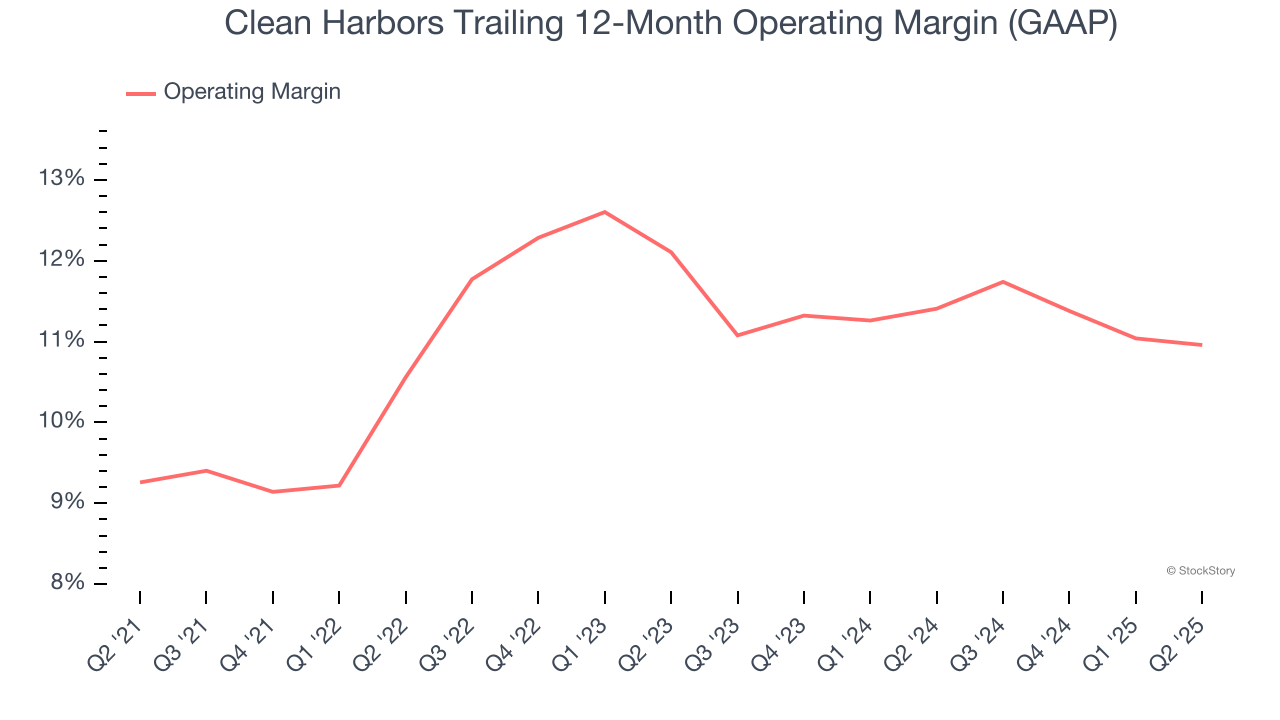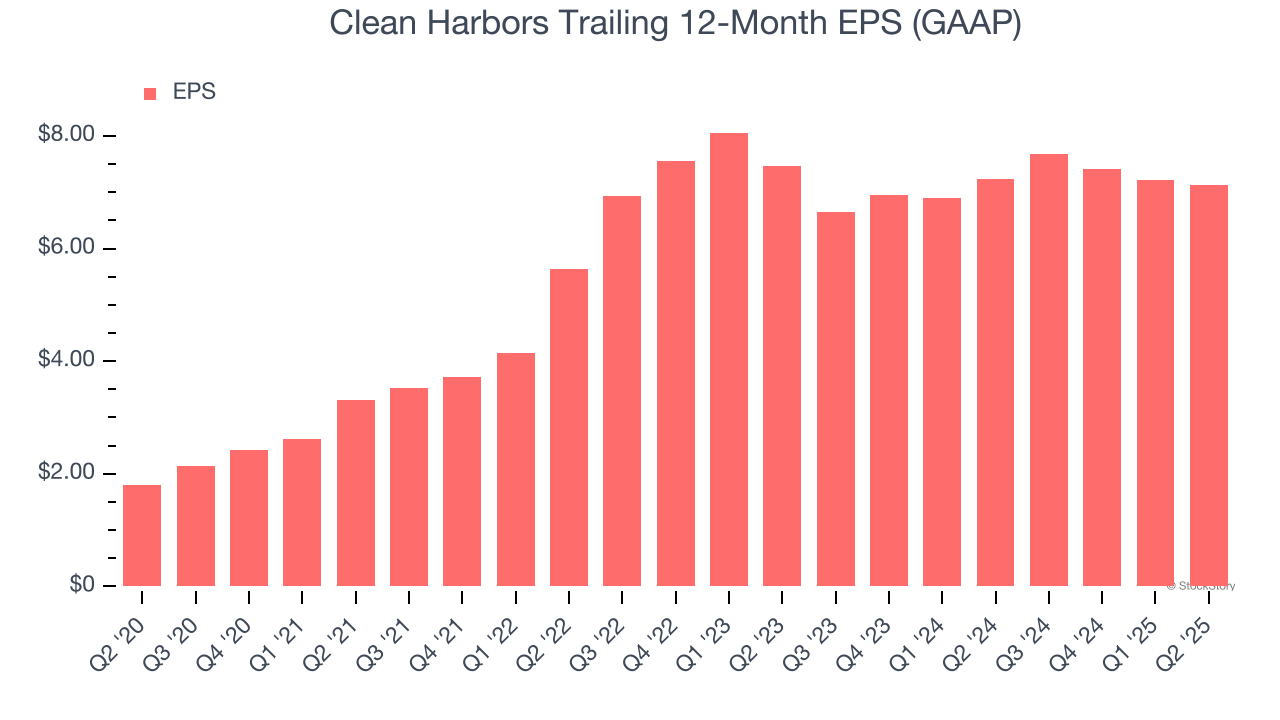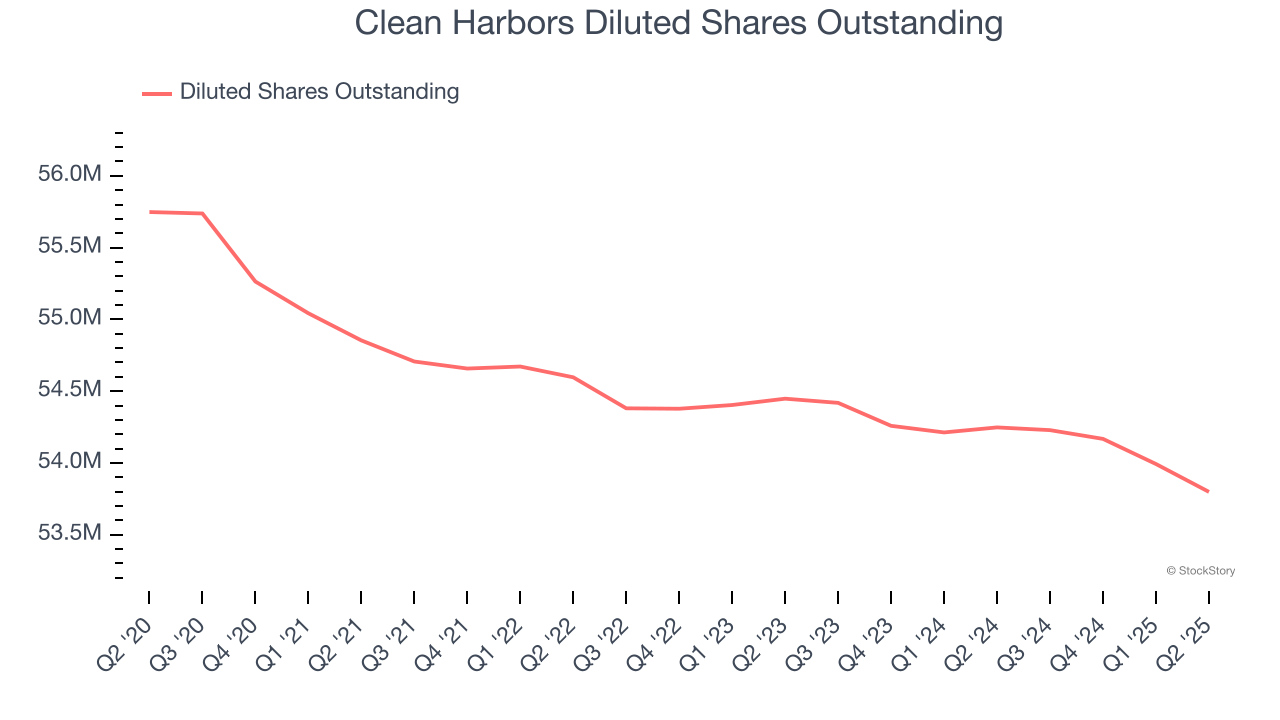|
|
|

|
|||||

|
|

Environmental and industrial services company Clean Harbors (NYSE:CLH) missed Wall Street’s revenue expectations in Q2 CY2025, with sales flat year on year at $1.55 billion. Its GAAP profit of $2.36 per share was 1.2% below analysts’ consensus estimates.
Is now the time to buy Clean Harbors? Find out by accessing our full research report, it’s free.
“Our second-quarter results reflect the consistent profitable growth of our Environmental Services (ES) segment, where we experienced strong demand for our disposal assets, and a stabilization of our Safety-Kleen Sustainability Solutions (SKSS) segment, where our collection strategies yielded favorable results,” said Mike Battles, Co-Chief Executive Officer.
Established in 1980, Clean Harbors (NYSE:CLH) provides environmental and industrial services like hazardous and non-hazardous waste disposal and emergency spill cleanups.
Reviewing a company’s long-term sales performance reveals insights into its quality. Any business can put up a good quarter or two, but the best consistently grow over the long haul. Luckily, Clean Harbors’s sales grew at an excellent 12.3% compounded annual growth rate over the last five years. Its growth beat the average industrials company and shows its offerings resonate with customers.

We at StockStory place the most emphasis on long-term growth, but within industrials, a half-decade historical view may miss cycles, industry trends, or a company capitalizing on catalysts such as a new contract win or a successful product line. Clean Harbors’s recent performance shows its demand has slowed significantly as its annualized revenue growth of 5.4% over the last two years was well below its five-year trend.

This quarter, Clean Harbors missed Wall Street’s estimates and reported a rather uninspiring 0.2% year-on-year revenue decline, generating $1.55 billion of revenue.
Looking ahead, sell-side analysts expect revenue to grow 6.2% over the next 12 months, similar to its two-year rate. This projection doesn't excite us and implies its newer products and services will not accelerate its top-line performance yet.
Here at StockStory, we certainly understand the potential of thematic investing. Diverse winners from Microsoft (MSFT) to Alphabet (GOOG), Coca-Cola (KO) to Monster Beverage (MNST) could all have been identified as promising growth stories with a megatrend driving the growth. So, in that spirit, we’ve identified a relatively under-the-radar profitable growth stock benefiting from the rise of AI, available to you FREE via this link.
Clean Harbors has managed its cost base well over the last five years. It demonstrated solid profitability for an industrials business, producing an average operating margin of 11%.
Looking at the trend in its profitability, Clean Harbors’s operating margin rose by 1.7 percentage points over the last five years, as its sales growth gave it operating leverage.

In Q2, Clean Harbors generated an operating margin profit margin of 13.6%, in line with the same quarter last year. This indicates the company’s cost structure has recently been stable.
Revenue trends explain a company’s historical growth, but the long-term change in earnings per share (EPS) points to the profitability of that growth – for example, a company could inflate its sales through excessive spending on advertising and promotions.
Clean Harbors’s EPS grew at an astounding 31.6% compounded annual growth rate over the last five years, higher than its 12.3% annualized revenue growth. This tells us the company became more profitable on a per-share basis as it expanded.

Diving into Clean Harbors’s quality of earnings can give us a better understanding of its performance. As we mentioned earlier, Clean Harbors’s operating margin was flat this quarter but expanded by 1.7 percentage points over the last five years. On top of that, its share count shrank by 3.5%. These are positive signs for shareholders because improving profitability and share buybacks turbocharge EPS growth relative to revenue growth.

Like with revenue, we analyze EPS over a more recent period because it can provide insight into an emerging theme or development for the business.
For Clean Harbors, its two-year annual EPS declines of 2.4% mark a reversal from its (seemingly) healthy five-year trend. We hope Clean Harbors can return to earnings growth in the future.
In Q2, Clean Harbors reported EPS at $2.36, down from $2.46 in the same quarter last year. This print slightly missed analysts’ estimates, but we care more about long-term EPS growth than short-term movements. Over the next 12 months, Wall Street expects Clean Harbors’s full-year EPS of $7.12 to grow 18.7%.
It was good to see Clean Harbors narrowly top analysts’ EBITDA expectations this quarter. On the other hand, its revenue and EPS fell short of Wall Street’s estimates. Overall, this was a softer quarter. The stock traded down 1.5% to $235 immediately after reporting.
Clean Harbors’s latest earnings report disappointed. One quarter doesn’t define a company’s quality, so let’s explore whether the stock is a buy at the current price. If you’re making that decision, you should consider the bigger picture of valuation, business qualities, as well as the latest earnings. We cover that in our actionable full research report which you can read here, it’s free.
| Dec-18 | |
| Dec-10 | |
| Dec-04 | |
| Dec-02 | |
| Dec-02 | |
| Nov-28 | |
| Nov-24 | |
| Nov-20 | |
| Nov-05 | |
| Nov-05 | |
| Nov-04 | |
| Oct-30 | |
| Oct-30 | |
| Oct-30 | |
| Oct-29 |
Join thousands of traders who make more informed decisions with our premium features. Real-time quotes, advanced visualizations, backtesting, and much more.
Learn more about FINVIZ*Elite